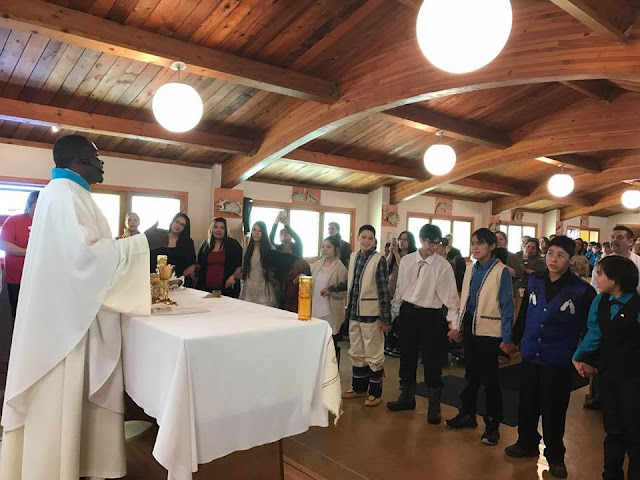(Originally published on OMIWORLD.org)
by Fr. Ali Nnaemeka. OMI
The story of Oblates in Canada cannot be told without
talking about our presence among the
First Nation communities. As a matter of fact,
four years after the arrival of the Oblates in Canada in 1841, Fr Pierre
FISET, visited Sept-Îles, in the Northern Coast of Quebec, to meet the Innu
First Nations people. Five years later, in 1850, the Oblates were charged with
all the First Nation missions of the Northern Coast of Quebec, from Tadoussac
to Labrador.
This mission grew with time, drawing many Oblates, both
Brothers and priests, to all the nooks and crannies of the vast territory of
this North Shore. Though the mission had its glories and weaknesses, it
remained a mission where the First Nation people and the missionary Oblates of
Mary Immaculate walked together in the vast field of evangelization.
The missionaries worked with the communities in the
systematization of their language, in the recording of their ancient histories
and traditions, in the translation of many important documents, etc. But after
many years of glory, the number of missionaries started seriously to dwindle.
Fortunately, the communities are already on their feet; they have their
linguists and professional translators; their anthropologists and ethnographers;
their own teachers and school directors, etc. The missionaries are thus
relieved of their social pastoral programs.
But then the communities that had missionaries dwelling
permanently among them started finding it difficult to have even a visiting missionary.
And true to our love of the First Nation Mission and the First Nation people,
the Oblate province of Notre-Dame-du-Cap made a missionary choice of assuring a
qualitative pastoral presence among the Innu Nation of the Northern Shore of
Quebec.
Today, we are four missionaries, from four different
countries, in charge of seven communities. Our communities are not as they were
a few years back. In most cases, the average age of those who come to our
activities is above 70 years. And this reality affects our relationship with
the younger generation.
But the community of Matimekush-Lac John has proven that
they can transform the life of their Church. At the beginning of 2016, the
community decided to reinvent its pastoral organization. Without a pastoral
team, we gave ourselves two years to go through an unending list of youths who
have not yet received their first Holy Communion. Once the challenge was
launched, up to 13 members of our community decided to volunteer in teaching
catechism. Recently, they proved their preparedness by presenting forty youths
to receive Holy Communion. It was a community activity since the last time half
of this number participated in such a celebration dates to 22 years ago.
During the celebration, the women expressed
their desire to assure a continuous accompaniment of our youth in the
preparation of sacraments and in showing other Innu communities how to be a
Church in this era of laity empowerment.




No comments:
Post a Comment